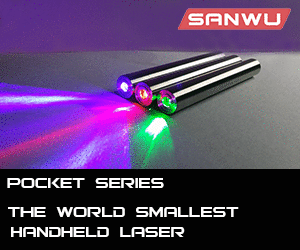You can knife edge beams and yes your front surface mirrors need to be kept clean, otherwise they will rob power, but better yet is to use dielectric coated reflectors and again keep them free from dust/smoke contamination.

www.live-lasersystems.net
--------------------------------------------------------------------------------------------------------------
Each diode will get an equal division of the voltage, so @ 50V each of 10 diodes will get 5V when in series, that's provided the necessary current is there to flow 5V each.
Remember laser diodes need current regulation to prevent runaway as they warm up, always regulate the current.
So for our 10 diodes in series, if the driver has 50V available and the current is limited to 2A at which 5V ( example NDB7875 ) will flow through each diode, then each diode will only get 5V..... however if you limited the current to say 1.25A then each diode would only flow the voltage needed, say 4.35V each even though 50V was available.



